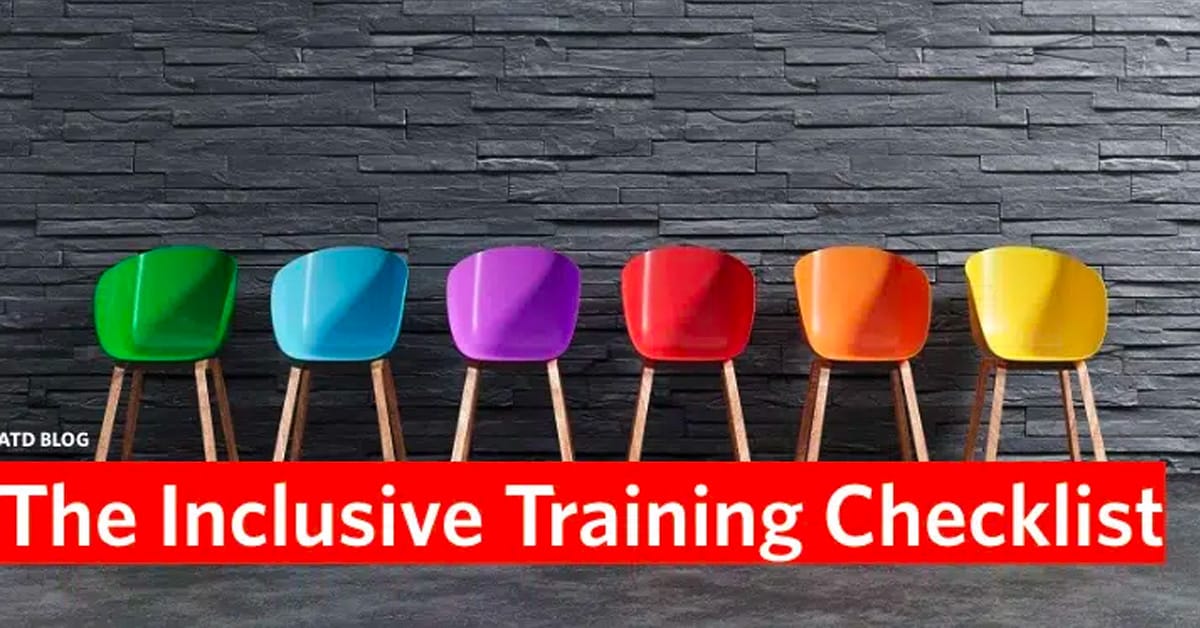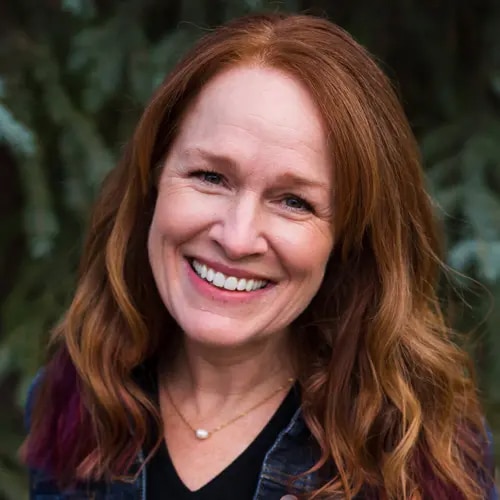
It can be easy to miss one of the key elements of truly great training: inclusion. One of the underpinnings of all top tier learning and development program and experiences is that the program, environment, and interactions are inclusive for all participants. Read on to learn what is included in inclusive training.
Prior to the Session
In advance of training, find out from participants:
- If they have any accessibility needs
- If they have food restrictions or requirements
- How their names are pronounced and what pronouns they prefer
- If there is anything you can do or if there is anything they need to make the training inclusive
When
Ensure that the:
- Time of day accommodates caregivers’ schedules
- Time zones of virtual participants are within normal working business hours
- Time of day does not conflict with standard prayer times or standard religious obligations
- Training is not being held on major religious or cultural holidays
- Training begins and ends on time
Who
The training leader or facilitator should:
- Communicate the agenda and goals for the training in advance.
- Keep the training on-agenda and on time.
- Formally welcome and introduce participants.
- Guarantee all participants are heard and feel respected.
Activities should be shared and rotated by everyone who may be asked to:
- Take notes.
- Create a flip chart.
- Use a white board.
- Help with cleanup, signups, training coordination, making coffee, bringing supplies, and so on.
Where
- The training is being held in person or online (circle one) to best accommodate participants.
- Facilities and tech are accessible for people with a range of disabilities.
- Audio amplification is available and used (mid- to large-sized rooms).
- ASL interpreters are present if requested.
- Enable closed captioning for online training.
- After a brief video check-in, allow cameras to be turned off in online trainings.
- During participant activities, put video feeds in gallery view, not active speaker view.
- Facilities are available for nursing mothers or people in need of privacy for medical conditions.
- The facility is free from known life-threatening allergens that participants have disclosed.
- The training is being held in a location that feels respectful to all participants.
- If your program is digital, check that it meets the Web Content Accessibility Guidelines (WCAG), part of a series of web accessibility guidelines published by the Web Accessibility Initiative of the World Wide Web Consortium (W3C), the main international standards organization for the internet. The program should meet WCAG 3.0 Level A Conformance or above.
How
Individual participants should:
- Arrive and depart during scheduled training time (in person and online).
- Be constructive and inclusive in communication.
- Be open to hearing differing points of view.
- Share the floor and airtime.
- Ask themselves: 1) How can I be more inclusive right now? and 2) Is there anything I can do to make this training more inclusive?
Communication should entail that:
- The training agenda is sent out in advance.
- Participants take turns or the facilitator asks those who have not spoken to share their points of view or ideas and ensure everyone has the chance to participate if they choose.
- There are no interruptions.
- The agenda has several minutes of quiet time built in for introverts to record and prepare their thoughts.
- Handouts and materials are presented in accessible formats.
- Visuals, exercises, stories, examples, handouts, and materials feature a broad representation of people across the diversity spectrum.
In your post-training evaluations, seek feedback about how inclusive the session was and incorporate that feedback into your next training. The more inclusive we make learning and development experiences, the better.
To learn more about Everyday Inclusion and receive a demo, click here.

Maureen “Mo” Berkner Boyt, is the moxie behind The Moxie Exchange. She is a thought-leader in DEI and has brought the most innovative product in the space to market. Maureen has spent over 25 years helping organizations grow by creating inclusive workplaces where talented people can thrive. People around the world are using the tools she created to build diverse and inclusive cultures in their organizations. Maureen holds a Master’s Degree in Organizational Development and is a published author and frequently requested speaker, teaching top organizations how to improve their bottom line by expanding their footprint in DEI. Her Disrupt HR Talk, Hack Your Biased Brain, is one of the most popular talks of the movement. Mo is a natural leader, entrepreneur, and dynamic educator who is an expert on getting people to think big, take action and move the dial on driving results for themselves and their teams.
